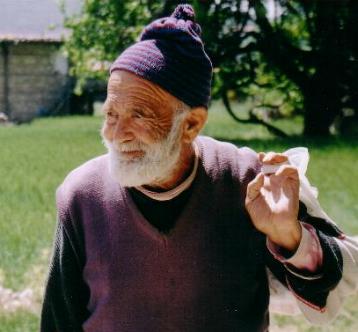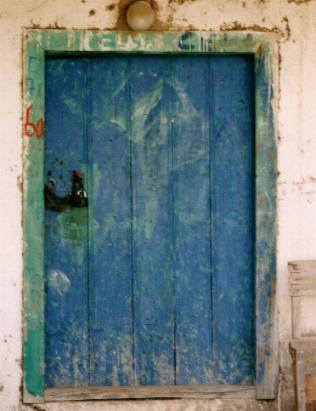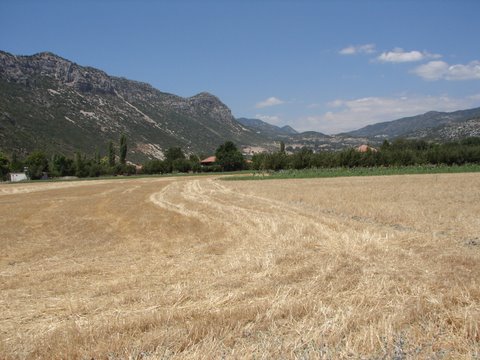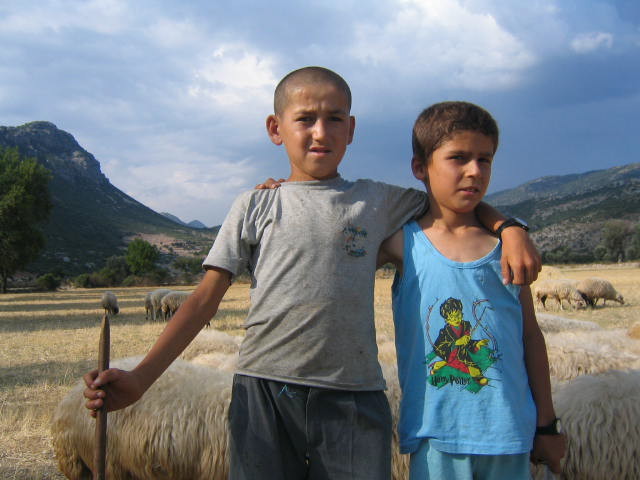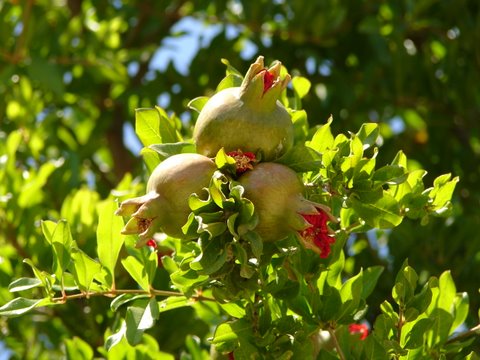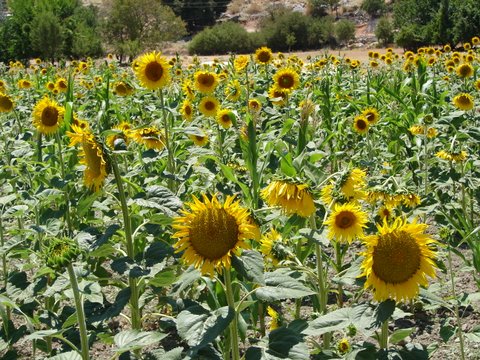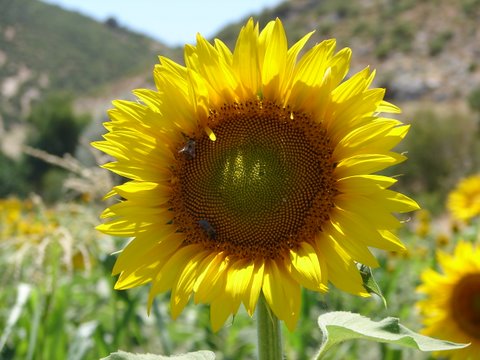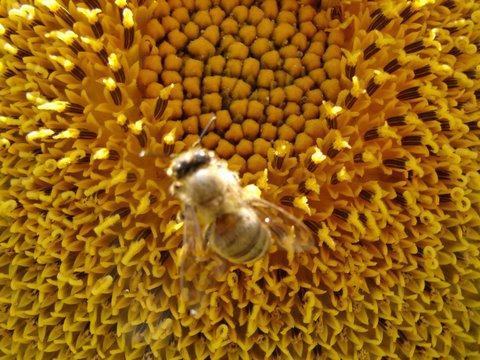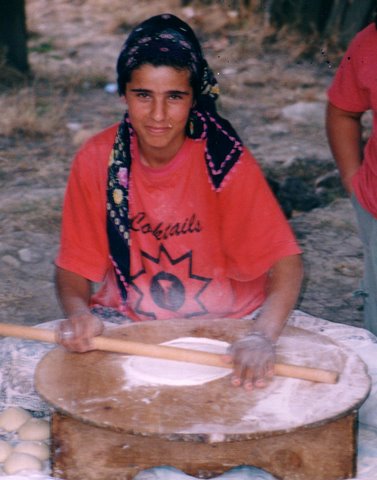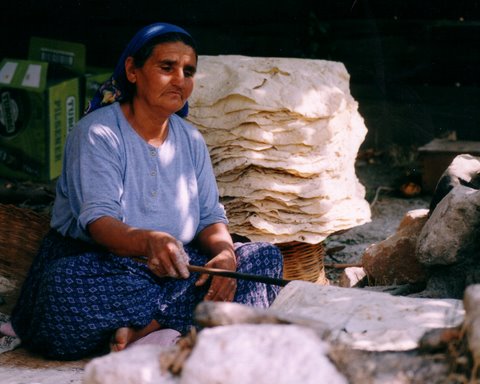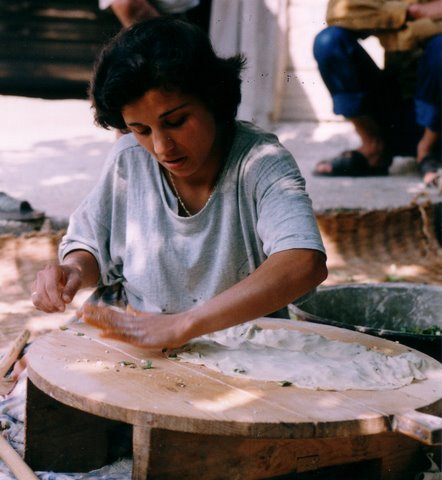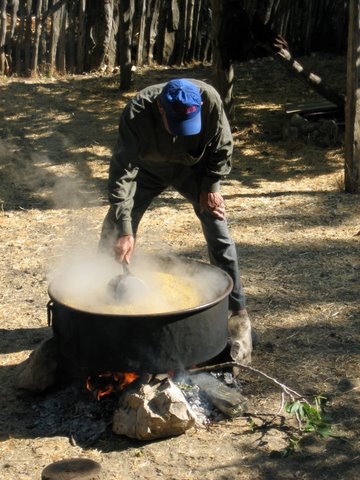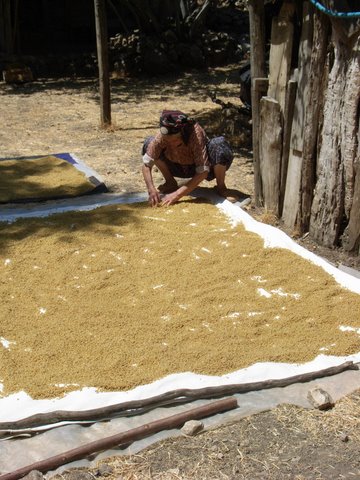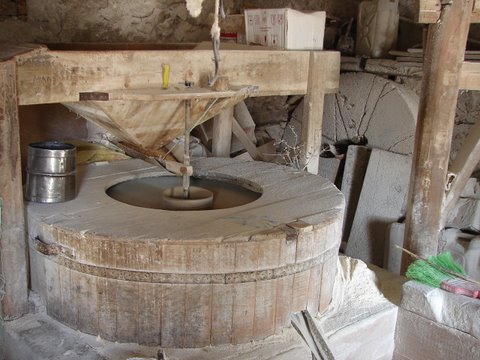The Mountains in Summer - Birds and Wildlife and Wildflowers
We have new permanent guests at Owlsland! Three years ago, a red squirrel appeared in the farmhouse garden, coming onto the balcony to pinch the sweetcorn hanging up to dry. He must have liked what he found, because two years ago he found a mate, set up home in the huge old oak tree, and produced one new baby squirrel. Last year and this they had twins, so now we have seven red squirrels...
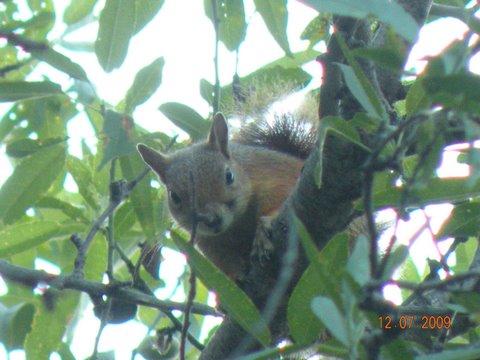 |
We have great fun watching their antics as they race through the branches and up and down the trunk of the oak tree. They're so fast it's hard to catch them in a picture, so we're indebted to Denise, John & Ellie for letting us use this terrific photograph of one of the squirrels pausing from his play. |
| Here's one of them in full flight as he races up and down the almond trees. For taxonomists out there, squirrels in Turkey are Sciurus anomalus, the Persian or Caucasian Squirrel, a type of tree squirrel, while the red squirrel found in Europe is Sciurus vulgaris. |
 |
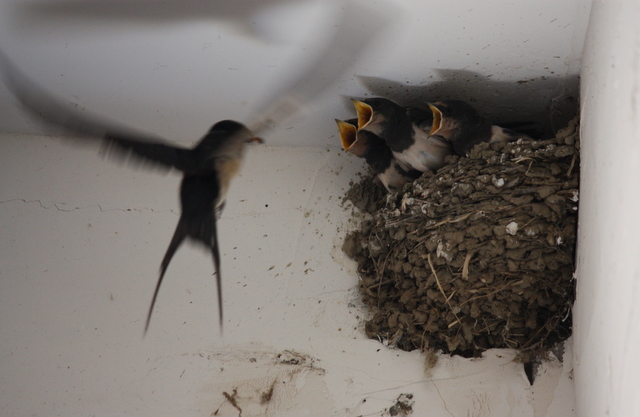 |
Though our swallows returned early this year to nest in the garage, for some reason the babies are very late. Four or five adult birds have been working together to help bring them on quickly, and they're demanding everything those aunties and uncles can bring! |
| Unbelievably, there are FOUR babies in the nest, though normally you can see only three at a time. Since the adults almost invariably feed the middle open beak, the fledglings swap places regularly, which is what they're doing here in the photo. |
 |
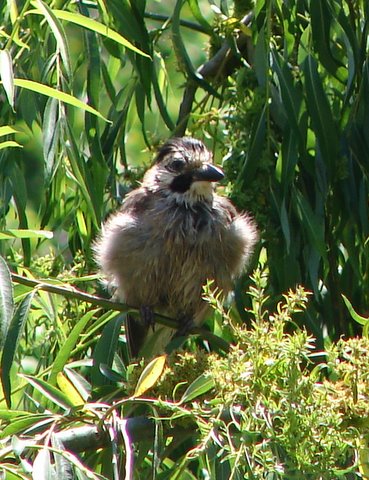 |
The one bird which is a bit of a pest is the jay - because, like others of the crow family, he'll rob the nests of other birds, stealing both eggs and chicks. Even saying that, they are beautiful birds nonethless. This is a young bird. |
| Lavender is always a great plant for attracting butterflies, but this variety is proving to be irresistible to swallowtails in particular. They're no longer common in this area - it's unusual to see more than one or two in a season, but this plant's been attracting as many as four at a time continuously for weeks now. This is a Scarce swallowtail, one of the most spectacular of Turkey's butterflies. |
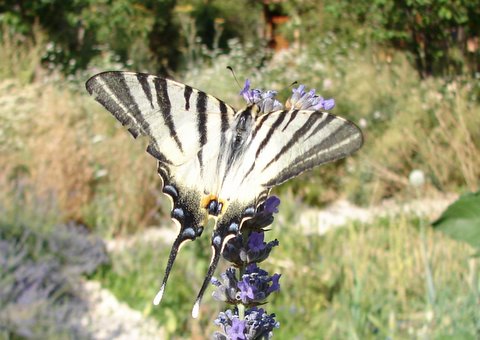 |
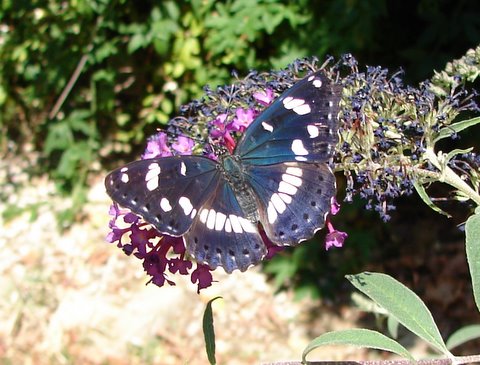 |
Another beauty - this time a Southern White Admiral butterfly. |
| Deer are quite rare around here, though they do live in the mountains. This beautiful, shy little creature appeared near the beach, to be caught by Denise, John & Ellie in this lovely picture, many thanks to them for letting us use it! (And if there was a prize for the guests who spotted the most wildlife here at Owlsland, they would surely win it!) |
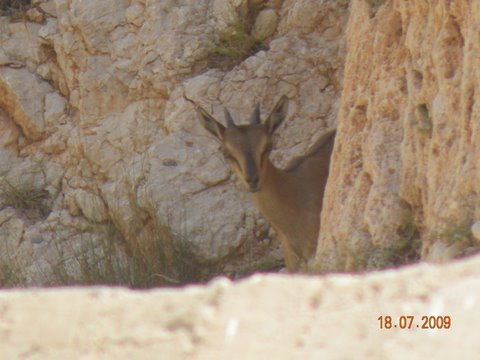 |
 |
The Romans occupied the cities of the Lycian federation around two thousand years ago, and part of their legacy is some amazing works of engineering. Whilst these ought to be cherished and conserved, as often as not they aren't even recognized. An example is this astonishing aquaduct, which must have carried water into the ancient city of Pirha. All the more amazing when you consider that Bezirgan has only intermittent town water today! |
The Garden in Summer - Herbs & Flowers & Wildlife
 |
Another favourite for the jays to steal is fruit - the crop of sour cherries (which make great jam) looks good this year, but if you don't pick the fruit as soon as it ripens, the jays won't leave a single cherry on the tree! |
| This is the second year we've had spectacled warblers in the garden. A pair nested and raised a brood in one of the conifers right beside the back terrace, You could watch the parent birds fly in and out with insects for their young as you sat at the breakfast table! |
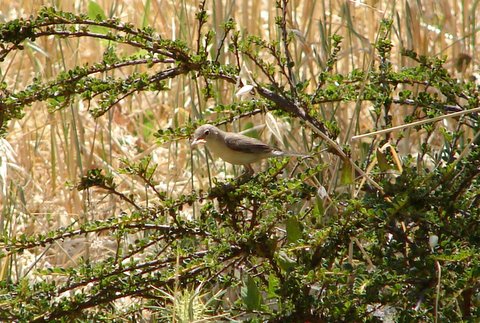 |
 |
We performed a major clean-out of our pond, since the bullrushes had totally filled it (nobody said you shouldn't buy bullrushes if your stretch of water is smaller than Loch Lomond!). Judging by the noise they're making, the frogs greatly appreciate the sudden increase in water volume. |
| The birds are also delighted with the chance to have a bath and a drink. This is a male black headed bunting. |
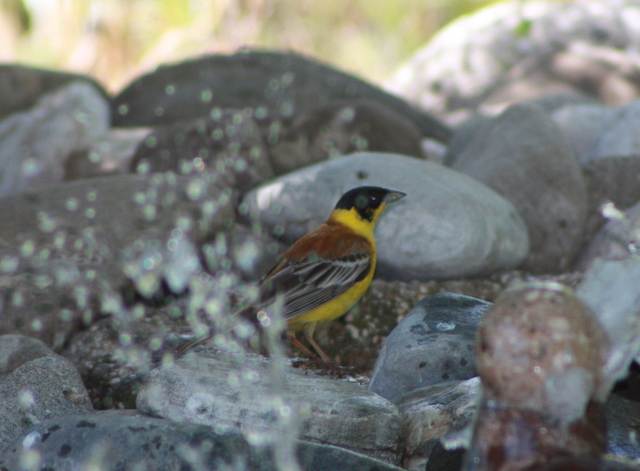 |
 |
We keep banging on about how many butterflies come to the garden, but this year (2010) has surpassed all others. Clouds of them rise whenever you touch a plant, especially in the herb garden. These blue butterflies are to be found in their hundreds on the valerian. |
| Most spectacular of them all, the swallowtail butterfly, on the lavender and valerian in the herb garden. For our money, valerian must be one of the best flowers you can grow - it flowers for about eight months of the year, withstands drought and rain alike, and attracts butterflies galore. |
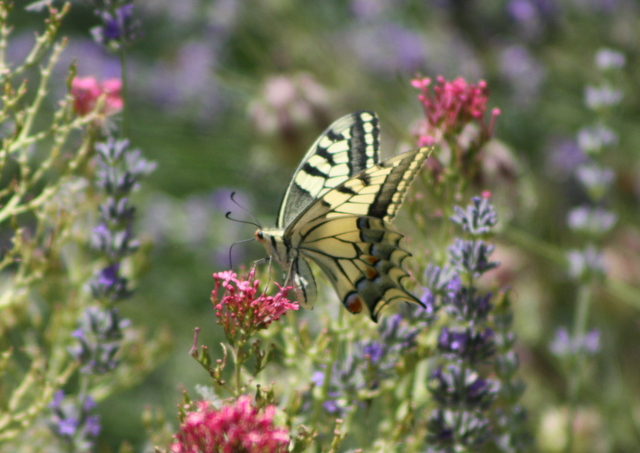 |
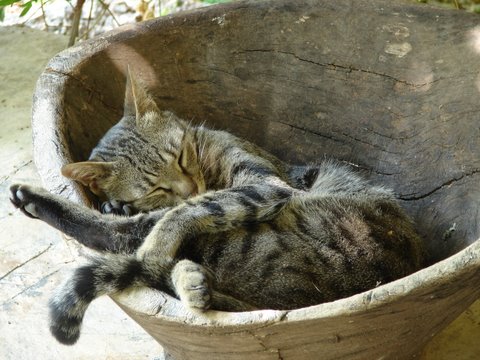 |
The cats don't believe in overworking in the heat - Jesse James takes a nap. |
| Jesse and his new friend Max, who came to us at the end of last year, and is settling in and gaining confidence day by day. |
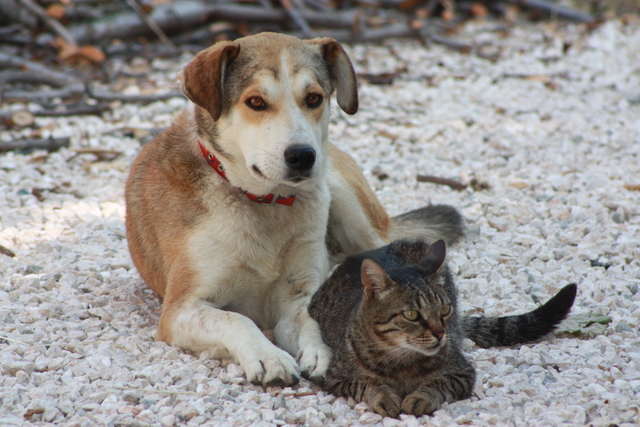 |
 |
A pair of masked shrike nest in the garden every year, and spend at least a month chasing anything which nears their nest, be it cats or jays. |
| Geraniums just love these dry conditions - they flower and flower when everything else is wilting. Here, they're with valerian, another plant which is happy even in drought. |
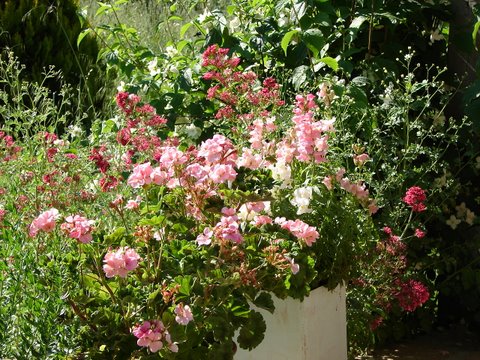 |
 |
More geraniums - this is an ivy-leaved variety, which produces dozens of these showy blooms for several months of the summer. |
|
Filling the terraces with tubs and planters is about the only way we can have flowers in high summer - we can manage to water containers when we can't spare the water to irrigate the garden. This selection includes dianthus, sage, scented geraniums and antirrhinums. |
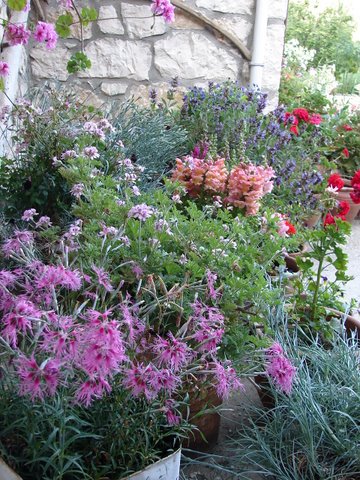 |
And that's a taste of summer in the Turkish mountains
Email
owlsland@gmail.com
© copyright Owlsland
